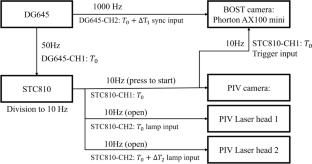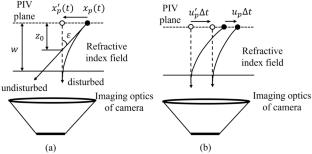Instantaneous refractive index compensation on the velocity measurement using simultaneous PIV-BOST
Abstract
This study has firstly provided an instantaneous refractive index compensation on velocity measurement in a reacting field where the 3D refractive index and the velocity distribution were measured by Background-oriented Schlieren tomography (BOST) and planar particle image velocimetry (PIV). A one-to-nine endoscope system was integrated with a camera to provide nine views of a turbulent non-piloted Bunsen flame. The 3D refractive index field was reconstructed from a neural network. A low-speed PIV system was applied to capture 2D velocity distribution across the central plane simultaneously. To synchronise the BOST system with PIV, two digital delay/pulse generators were synchronised to generate two groups of signals with different frequencies for two systems with a fixed phase delay. The pixel shifting on the PIV plane was resolved by estimating the gradient of the thermal-induced refractive index between the PIV camera and the imaging plane. The magnitude of the instantaneous velocity error caused by the light deflection was estimated (\(\pm \,2\%\)) for a small non-pilot flame. By inversely considering the velocity error, the error effect caused by the instantaneous refractive index displacement was firstly removed. Such a technique provides a well-defined method that can resolve the same velocity error in PIV measurement in larger flames, significantly improving the accuracy of PIV in reacting flows.



 求助内容:
求助内容: 应助结果提醒方式:
应助结果提醒方式:


